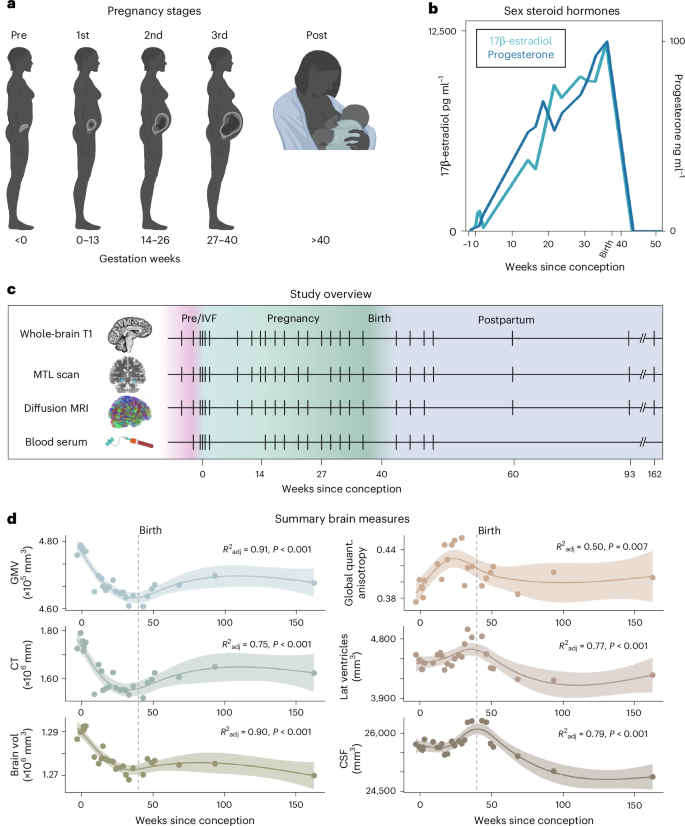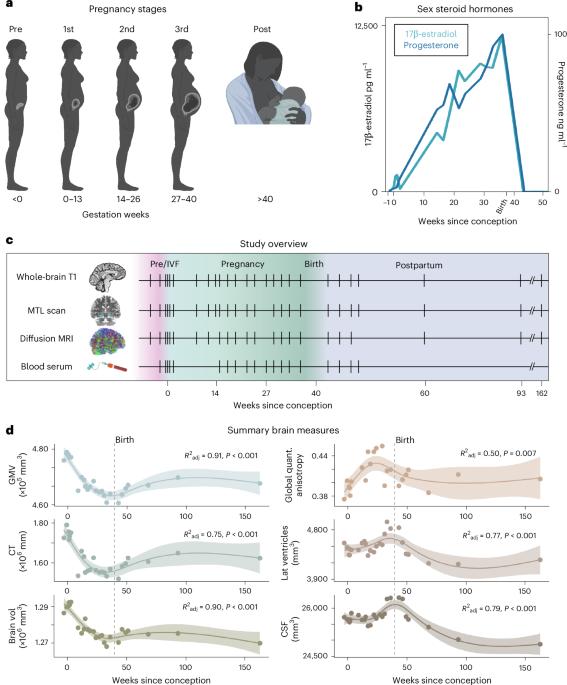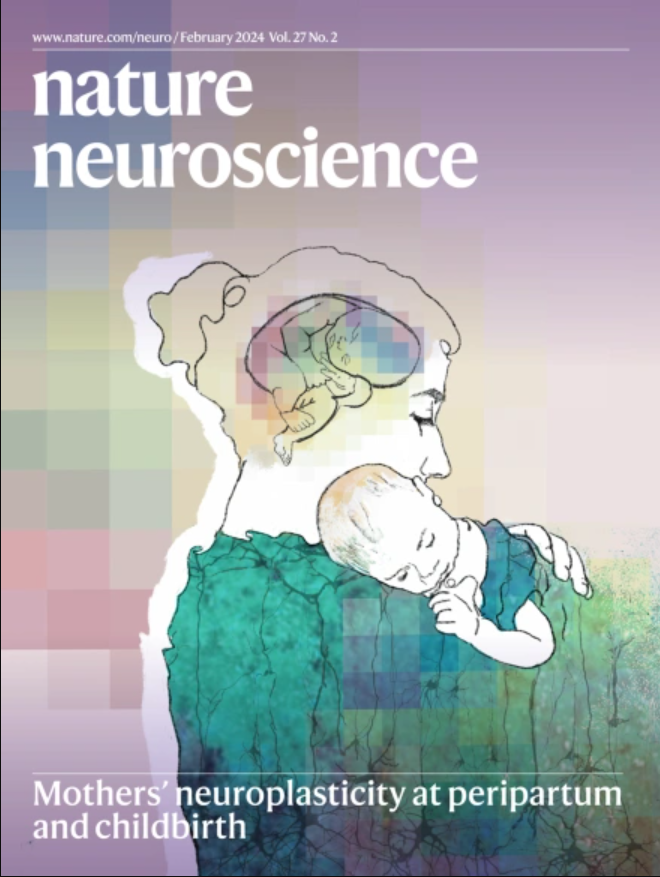在人类怀孕期间观察到的神经解剖学变化
IF 21.2
1区 医学
Q1 NEUROSCIENCES
引用次数: 0
摘要
每年都有数百万妇女在怀孕期间经历深刻的荷尔蒙和生理变化,但人类对整个妊娠期母体大脑神经变化的研究还不够深入。利用精确成像技术,我们绘制了一个人从怀孕前到产后两年的神经解剖变化图。整个大脑的灰质体积和皮质厚度明显减少,与之形成鲜明对比的是白质微结构完整性、脑室体积和脑脊液的增加,很少有区域在向母亲过渡时没有受到影响。该数据集是整个妊娠期人类大脑的综合地图,为大脑成像界进一步探索和了解孕产妇大脑提供了一个开放访问的资源。本文章由计算机程序翻译,如有差异,请以英文原文为准。


Neuroanatomical changes observed over the course of a human pregnancy
Pregnancy is a period of profound hormonal and physiological changes experienced by millions of women annually, yet the neural changes unfolding in the maternal brain throughout gestation are not well studied in humans. Leveraging precision imaging, we mapped neuroanatomical changes in an individual from preconception through 2 years postpartum. Pronounced decreases in gray matter volume and cortical thickness were evident across the brain, standing in contrast to increases in white matter microstructural integrity, ventricle volume and cerebrospinal fluid, with few regions untouched by the transition to motherhood. This dataset serves as a comprehensive map of the human brain across gestation, providing an open-access resource for the brain imaging community to further explore and understand the maternal brain. Neural changes in pregnancy are not well understood. Here Pritschet et al. present an open-access precision brain imaging resource, mapping neuroanatomical change in an individual from preconception through postpartum.
求助全文
通过发布文献求助,成功后即可免费获取论文全文。
去求助
来源期刊

Nature neuroscience
医学-神经科学
CiteScore
38.60
自引率
1.20%
发文量
212
审稿时长
1 months
期刊介绍:
Nature Neuroscience, a multidisciplinary journal, publishes papers of the utmost quality and significance across all realms of neuroscience. The editors welcome contributions spanning molecular, cellular, systems, and cognitive neuroscience, along with psychophysics, computational modeling, and nervous system disorders. While no area is off-limits, studies offering fundamental insights into nervous system function receive priority.
The journal offers high visibility to both readers and authors, fostering interdisciplinary communication and accessibility to a broad audience. It maintains high standards of copy editing and production, rigorous peer review, rapid publication, and operates independently from academic societies and other vested interests.
In addition to primary research, Nature Neuroscience features news and views, reviews, editorials, commentaries, perspectives, book reviews, and correspondence, aiming to serve as the voice of the global neuroscience community.
 求助内容:
求助内容: 应助结果提醒方式:
应助结果提醒方式:


